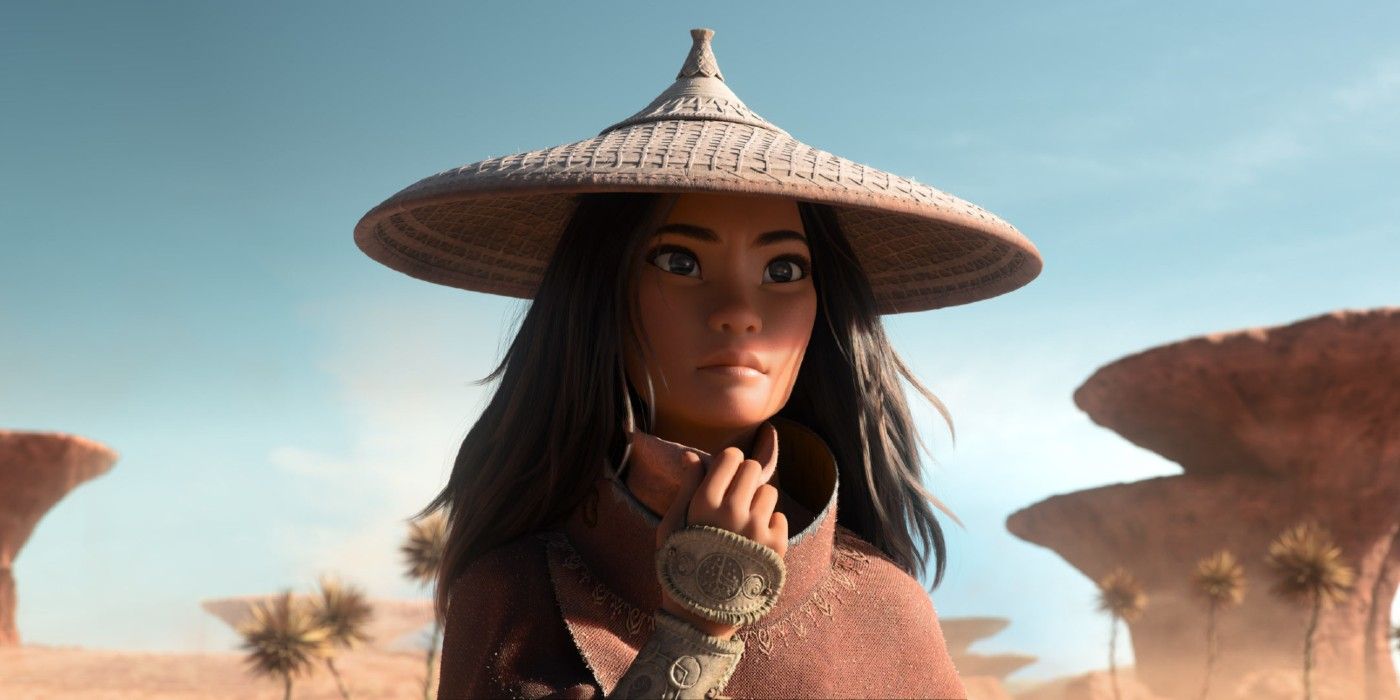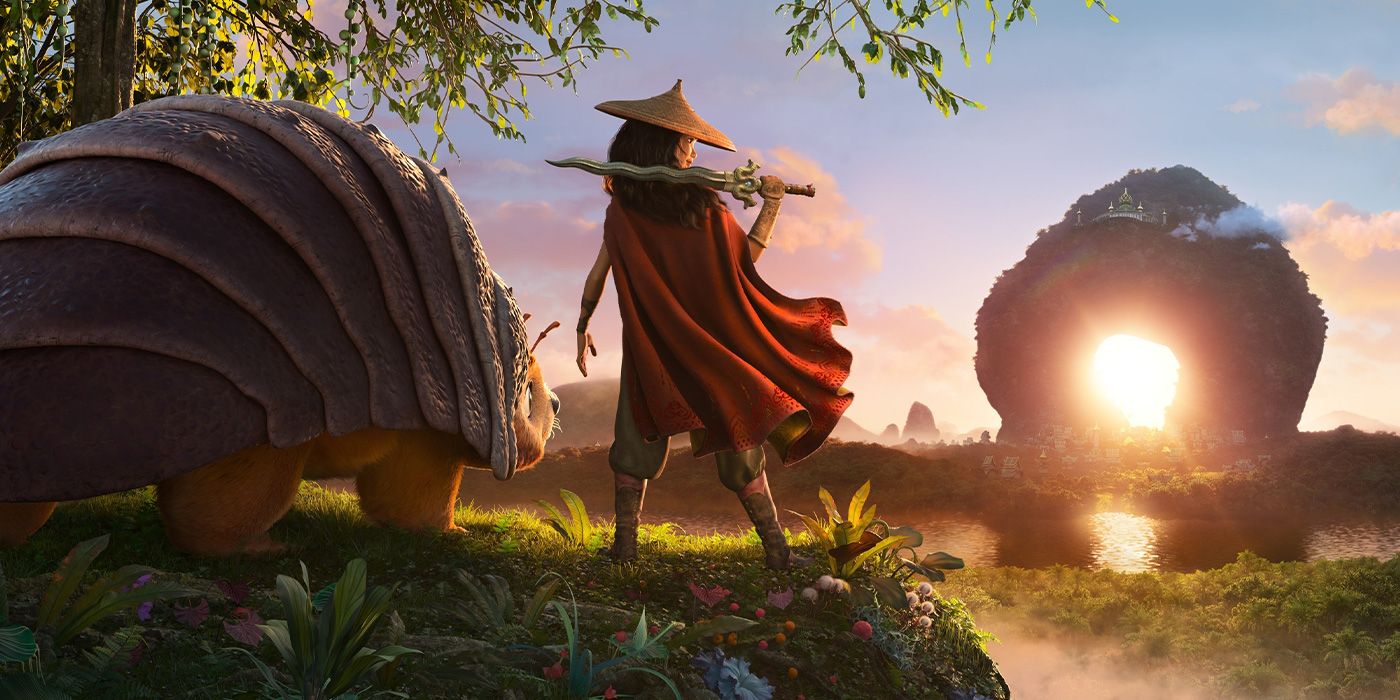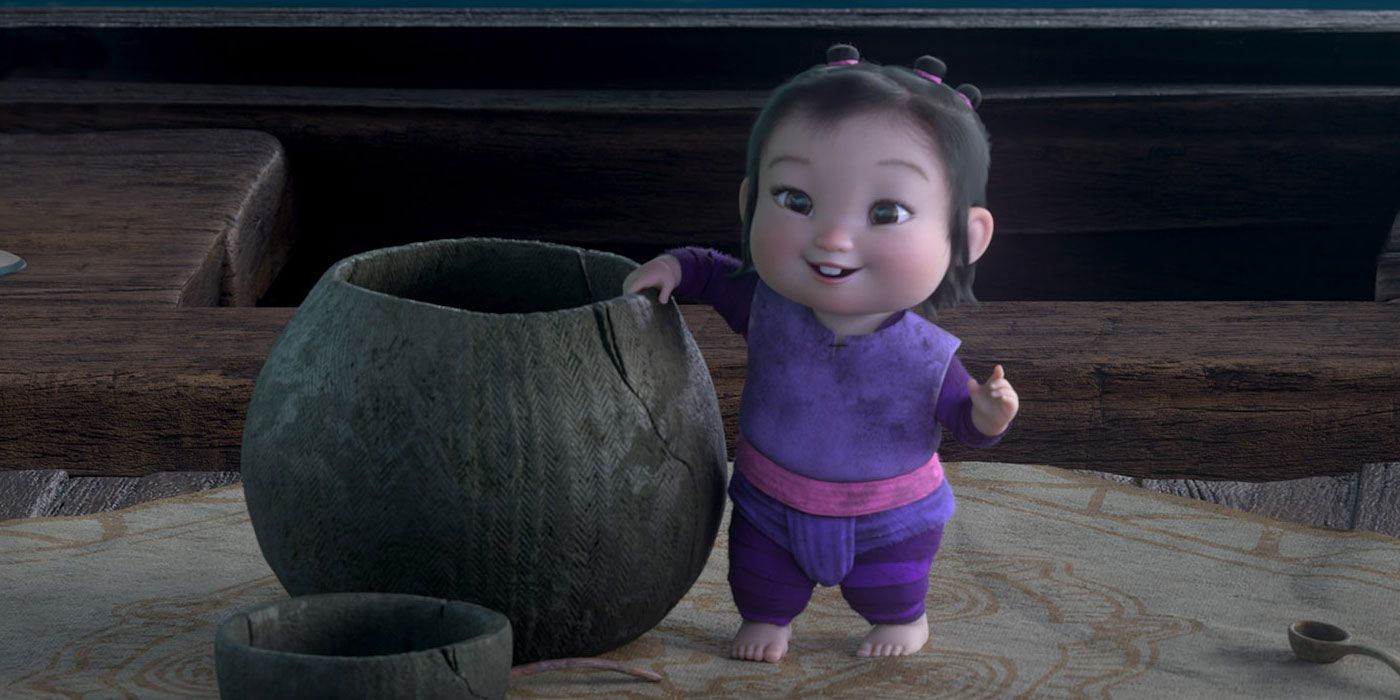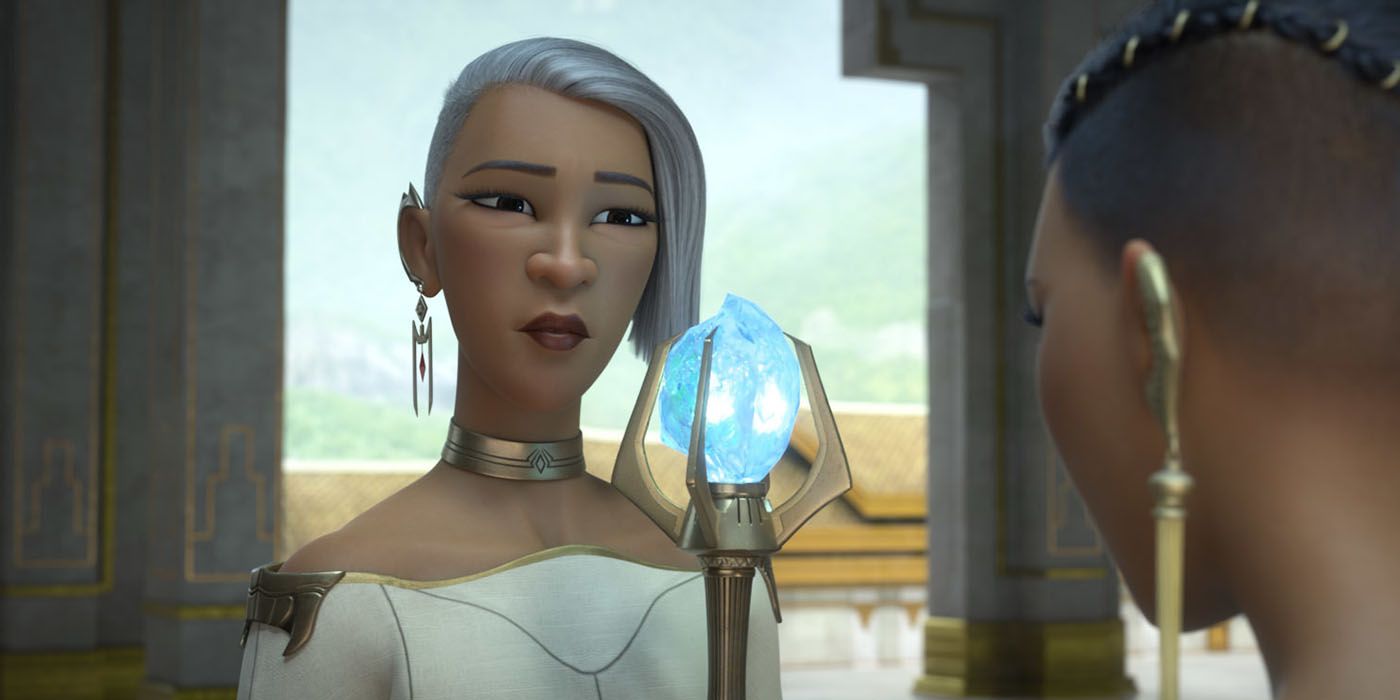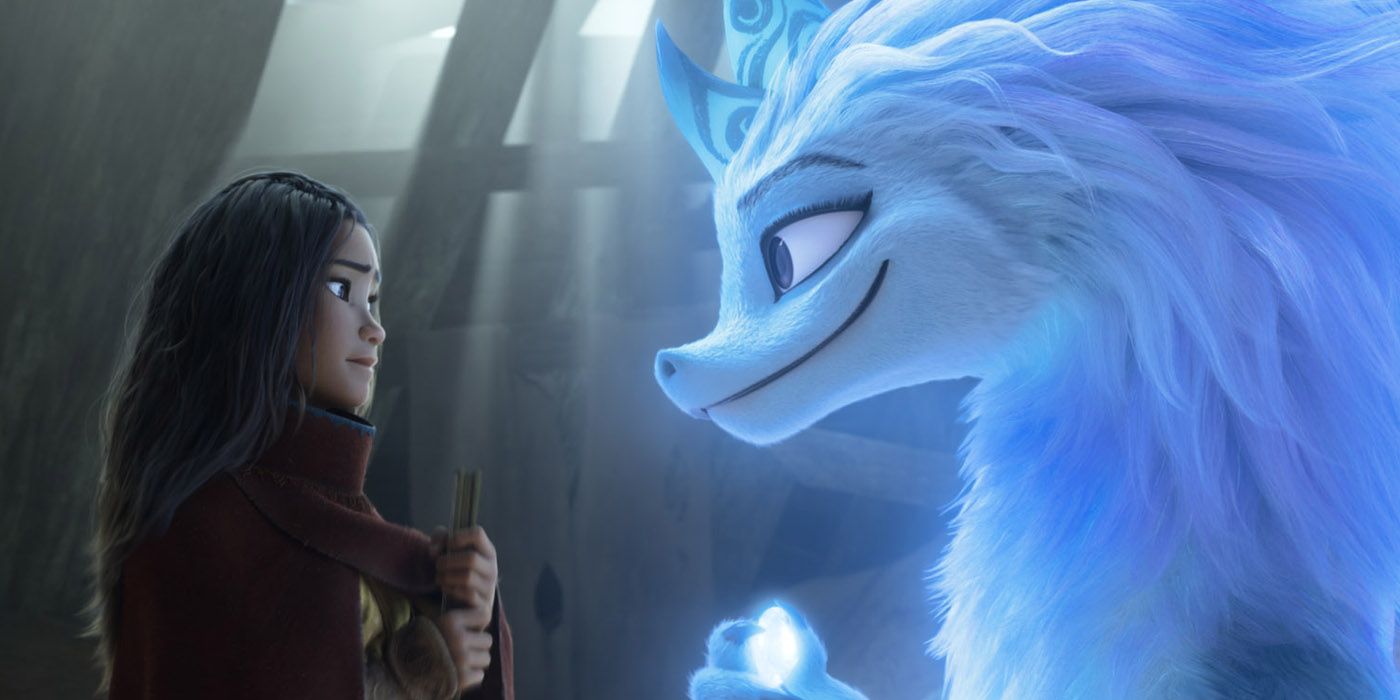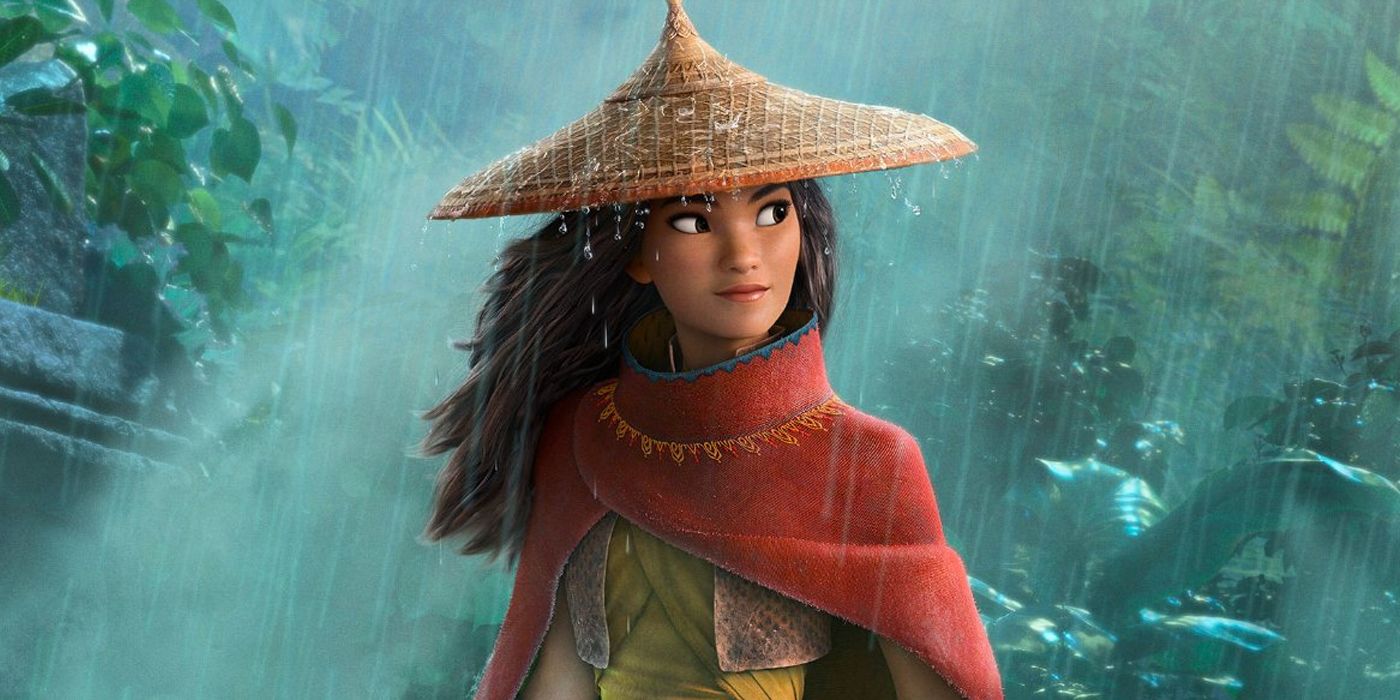Directed by Don Hall and Carlos López Estrada and from Walt Disney Animation Studios, Raya and the Last Dragon travels into a world where everything once lived in harmony before an evil force fractured and divided humanity. That same evil force sends Raya on an epic journey five hundred years later, with the hope of finding the last dragon and restoring all of the life that had been lost.
During a virtual press conference to discuss all things Raya and the Last Dragon, co-stars Kelly Marie Tran (“Raya”), Awkwafina (“Sisu”), Daniel Dae Kim (“Benja”), Gemma Chan (“Namaari”), and Sandra Oh (“Virana”) talked about making this movie from home during a pandemic, pulling off the comradery of the story when they couldn’t be together, why audiences can identify with these characters, the father-daughter dynamic between Raya and Benja, finding Sisu, and the importance of this film at a time when there has been a rise in attacks against Asian Americans.
Question: Because of COVID, you made this movie from home, which is unbelievable for a Disney production of this quality and this magnitude. What was that like to do?
DANIEL DAE KIM: It was really great, actually. I love the character a lot. He’s someone that I aspire to be. It’s nice when you can really take a lot of pride in the person that you’re playing. It was amazing, actually being able to record from home. Living in Hawaii, any time I travel to go shoot something, it’s at least five hours, eleven by plane. So, to be able to walk downstairs in my t-shirt and shorts was pretty great. Although, I will have to say that it wasn’t without hiccups. In one of my very first sessions from home, most of his dialogue, where he’s talking about Kumandra and establishing a relationship with Raya, went missing. We had put in a good hour and we did some great stuff. At the end of the hour, we were supposed to upload our packets to Team Disney, and as I was uploading my packet, I realized that I had recorded none of that past hour. That’s what happens when you leave the recording and the technical stuff to the actors. So, we lost that hour, but I learned my lesson. It was hassle-free, the rest of the way.
How did you manage to pull off the comradery of this story, when you couldn’t be together?
KELLY MARIE TRAN: Honestly, I feel like all the credit has to go to the story team, the editing team, and all of the incredible teams behind the movie. All of the actors, at least in my experience, were isolated and we were recording by ourselves. To see the movie now, totally finished, and to see all of the chemistry that these incredible characters have, that says a lot about the expertise of Disney animation and the incredible talent working behind this movie, and also about the cast. It was an incredible experience.
What was it like to see the details of the culture in this?
AWKWAFINA: I’m gonna be honest, I saw the first clip that was put together at D23 and I was a little confused because I was like, “Is this a live-action movie? Let me get my agent on the phone.” It looked so realistic, with the rain and everything. But then, you realize all that really goes into this. We’re recording simultaneously, as it’s being animated. When I first saw the human version of Sisu, I was like, “Okay, all right, that’s me. That looks like me.” Those nuances are very, very trippy and very, very mind-blowing.
Sandra and Gemma, what aspects of your roles do you really want audiences to take away, especially when it comes to Southeast Asian cultures?
SANDRA OH: I’m not gonna really speak about the Southeast Asian culture. I don’t think that I really can. But I would say what I appreciate about Fang and our characters is that they’re complex. There’s no black and white in these characters, which I greatly appreciated. I was extremely moved by the message of this film because I feel myself struggling to learn how to trust, as well. So, to play a section of the film where it seems we are antagonists, or the people who are struggling to take power, I feel like the storytelling and the characters, particularly with Gemma’s character, Namaari, has a very nuanced and more complex look at things, which is where I feel like we need to bring storytelling anyway, for a more nuanced point of view. I was really happy to be a part of that.
GEMMA CHAN: Yeah, for sure. One of the things that really drew me to this story and resonated with me is the fact that Namaari is the antagonist, but she’s not a clear-cut villain. It’s not black and white. I find that really interesting. She and Raya are also two sides of the same coin. You could imagine them having each other’s upbringing and easily taking each other’s place. So, similarly to Sandra, I feel like our world is complex and the problems of the world are only gonna start to begin to be solved, if we all work together. The lack of trust and the division is a huge problem. You can also understand why the people of Fang are trying to protect themselves. You can understand why we have elements in society that want to protect their own self-interests. I think these are really complex themes to explore in a family film and I applaud the storytellers for tackling this. It couldn’t have come at a more timely moment, when we are in the position we’re in, in the world right now. I’m so happy and proud to be a part of this film . . . And when I found out that Sandra was voicing my mom, everything clicked into place. I was like, “That’s my Namaari.” She’s got so much to prove. It all just fell into place for me. I was so happy.
Kelly and Gemma, how did you approach your characters, so that we could understand why they both feel very strongly that they’re right?
CHAN: I love the fact that they have this love/hate dynamic, but at their core, they have so much in common. I love the fact that Namaari has this real aggressive exterior, but underneath it all, she’s got this huge heart and this real love for dragons that’s been there since childhood. I love that first scene where she locks eyes with Sisu and everything just falls away. It’s as if she’s become a child again. I love that, and that was my way into her, really. We’ve all had those people in our lives that we have a love-hate relationship with, and I think it’s such a fine line. I love the fact that Namaari and Raya have had that connection since childhood and they’re rivals, but they also have a lot in common.
TRAN: I absolutely agree. I think setting up these characters as kids and seeing how authentically they connect at a young age, and then cutting forward and seeing the way that they’ve been divided, is really incredible. There’s the idea that we have these two characters that could have switched places, at some point. I think about my life and when things like that have happened to me and how difficult it is to get out of your own biases when you’re looking at someone who you see as an enemy, and then how, by the end of the story, Raya and Namaari are suddenly willing to step outside of themselves. They risk everything for this idea of community and this idea of what their relationship could have been this entire time. It’s really, really inspiring. It’s something that I want to do in my own life. Their relationship in this movie is probably one of my favorites, just because of how complicated it is. And I’m just a big Gemma fan girl over here.
CHAN: It’s absolutely mutual. It shows how when we’re young, as children, we don’t inherently hate each other. It’s something that’s learned. It’s something that comes through, whether it’s from a parental or family influence, or from your particular tribe. Those things are learned. That’s something to take from the movie. Those things can be learned, but they can be unlearned, as well.
Awkwafina, Sisu has some Robin Williams as Genie vibes in this. How did you find Sisu’s voice?
AWKWAFINA: Wow, thank you for that comparison. It’s very flattering, obviously. I was obsessed with Genie. He’s one of my favorite characters from my childhood, and therefore, there maybe was this subconscious thing. I think the real beauty here is that when I was approached to play Sisu and heard about what her vibe was, I was given a chance to add my own voice to it and simultaneously build her up with the directors, who were always more than willing to explore and play. She was really born out of that process. But they’re both definitely big and blue. That’s definitely a thing. Those are really big shoes to fill. The really cool thing about Sisu is that she was part my voice too.
Kelly and Daniel, how did you create your father-daughter relationship?
TRAN: I think we met once at an Amplify event for a second, but we hadn’t really interacted that much. Awkwafina and I had met at an event for a couple seconds. Now, I’m getting to know them both better over Zoom. Benja and Raya and their relationship, for me, is reminiscent of my relationship with my own father. Just with the idea of reverence for your elders and how important family is, he bestows all of those really incredible ideas upon Raya at such a young age. I cried in so many scenes with Benja I love their relationship, and I think Daniel Dae Kim is just the best. I’m also a huge fan girl of Daniel Dae Kim.
KIM: I really give a lot of credit to (co-directors) Don [Hall] and Carlos [López Estrada], and the producing team. The pitfall of this character is that he could be just a stentorian orator, or the politician who is the king that’s gonna dictate the way everything is. But they kept pushing me to have a really intimate, loving relationship with my daughter, which really triggered something different in me. It really led to finding that relationship. And the second thing is that I know Kelly. We met briefly and I’d followed what was going on with her in the news and I knew what she’s about. All of those things were the characteristics that I could relate to and connect to. And so, it was not just about our roles as characters, but also knowing who she is, as a person, and feeling like I could connect to that personally. And then, when I saw the scenes between the two of us, I really thought that connection came through, even though we never actually were in the booth together. It’s a real testament to her performance.
What does it feel like to be able to represent the Asian community in this film and in the entertainment industry?
OH: It was difficult because we made this in COVID times. Also, with how animation is made, you don’t get to meet everyone. All of the directors do. It’s really seeing how animation has moved on. For someone like myself, growing up in the ‘70s and the ‘80s, I didn’t see anything and it has been that same way, representation wise, for a very long time. I’m actually just glad that I’m still alive to be a part of this type of thing. In that way, it’s very exciting. It’s an exhilarating change for someone like myself to be a part of and to witness.
What’s it like to have this film come out, at a time when Asians and Asian Americans are being targeted and attacked? What do you hope audiences will take away from this?
OH: I was extremely moved by the theme and the ending of the story, which ultimately is about trust and how I, myself, am struggling with that. Art is here to pose questions and to potentially suggest possibility. Even if we start with that question, to see in one’s self, “Who do I trust? How am I not trusting? Can I trust? Can I trust that other side? Can I trust them when it seems to be proof positive that this is what has been done to me?” The theme of the story is that we cannot go on as a society and the world cannot continue without open-heartedness. The truth Raya and Namaari learn is that you have to be willing to have your heart broken, again and again and again, just to keep it open. We know hate is not finished by hate. It is only won over by love. Individually, and then hopefully as a community and society, we have to move towards that way because all of us are in the same boat. It’s a beautiful opportunity. If one can see 2020, in all its destructiveness and change, as an opportunity that somehow has also broken all of our hearts open, what can we do with that?
KIM: We also can’t undervalue the power of the fact that this is a Disney movie and the people that will be watching this movie will, by and large, be families who are seeing this kind of representation and understanding what is possible. I’m also thinking about all the children who will be seeing Raya for the first time and seeing a strong Asian female who kicks ass and becomes a queen. She’s on the path to becoming a ruler and she’s being groomed by her father to do that in a loving relationship. All of these things are such a positive portrayal. It’s exposure that brings understanding, and that understanding is what changes perception. What this movie does, on the scale of those things, cannot be underestimated.
TRAN: There’s a moment with Raya, towards the end of the movie, where she gets to feel justifiably and absolutely unapologetically angry. For me, seeing a young woman in a movie like this just get to feel that righteous anger, and then recognizing that the thing that pulls her out of it is seeing her friends and how they’re helping other people feels so real to me. I don’t wanna speak for everyone, but I can say seeing these attacks happening, over and over and over, consistently, you do get to that place sometimes where you feel like, “This is a very broken world and I’m feeling a lot of things right now.” That moment felt so grounded in reality. Acknowledging that there’s a lot of pain that happens there and recognizing that, the only way to really get through it is to look for the bits of hope in your community. I see so much hope on and I’m grateful to be making a movie with these characters who are also trying to fight for a world that feels impossible and hopeless sometimes.
CHAN: We’re talking about everything that’s going on at the moment and it’s easy to feel overwhelmed with hopelessness and anger, but where I get my hope from is that there are helpers. There are people that have been helping and I wanna shout out all of the grassroots organizations and individuals that have been doing the hard work on the ground for a long time and that maybe are not getting the airtime or the attention that they should. Now, it feels like there is this moment to spotlight their work because they’re already building these cross-community alliances that we need. I feel so grateful that they’re there, doing the hard work on the ground. We’ve all got our part to play. As storytellers, we put out our film, which I hope has a message that resonates. And then, we also have amazing people within our communities who are doing that work today, so I just want to shout them out.
Raya and the Last Dragon is in theaters and available to stream at Disney+ Premier Access.

